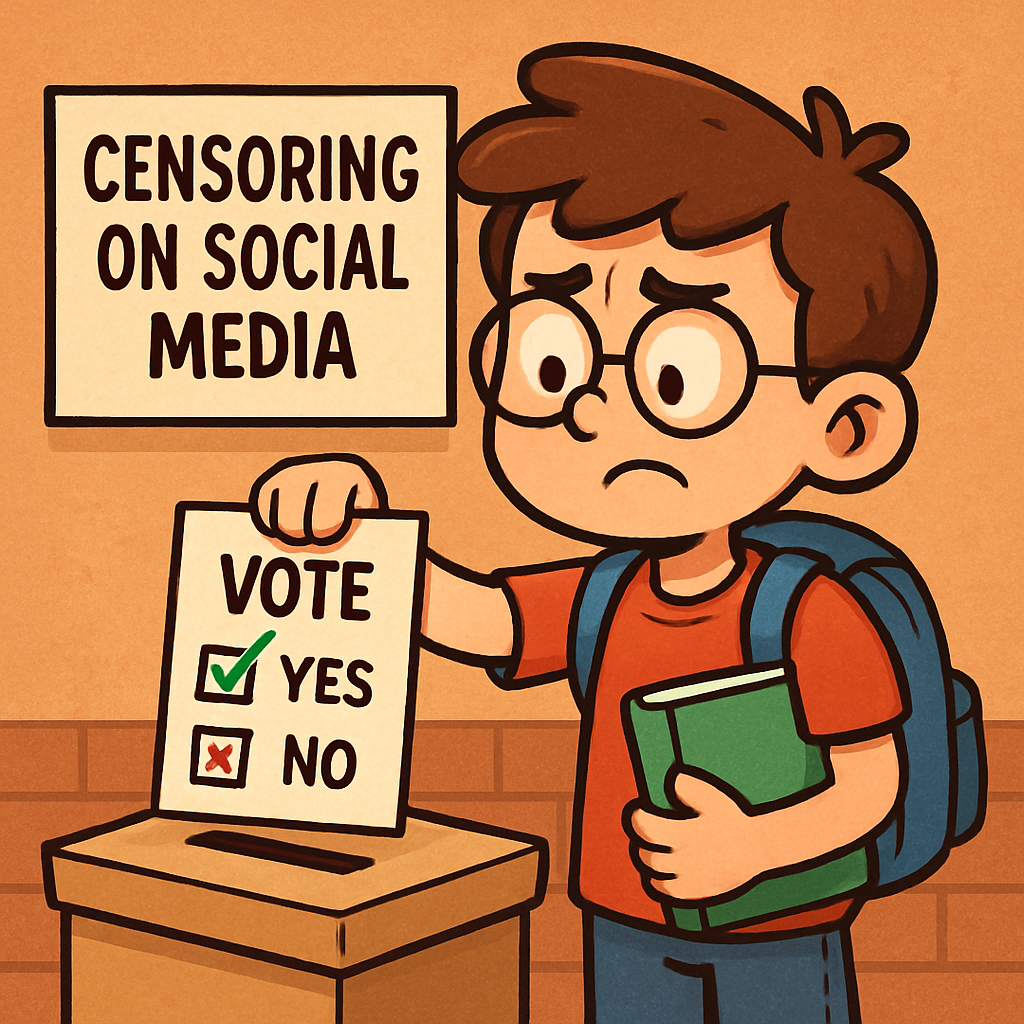 In this lesson, you will lead a debate on ethical issues in digital media. Debating involves discussing a topic from multiple perspectives, presenting well-reasoned arguments, and actively listening to others. It is an effective method for exploring complex ideas, such as whether social media platforms should regulate misinformation or if art generated by artificial intelligence can be considered truly original. Engaging in debates helps you develop critical thinking skills, construct robust arguments, and appreciate diverse viewpoints – abilities that are highly valuable in everyday life.
In this lesson, you will lead a debate on ethical issues in digital media. Debating involves discussing a topic from multiple perspectives, presenting well-reasoned arguments, and actively listening to others. It is an effective method for exploring complex ideas, such as whether social media platforms should regulate misinformation or if art generated by artificial intelligence can be considered truly original. Engaging in debates helps you develop critical thinking skills, construct robust arguments, and appreciate diverse viewpoints – abilities that are highly valuable in everyday life.
Why is this relevant to digital ethics? Digital media impacts society as a whole, and debating allows you to examine questions of right and wrong, including topics like online privacy and the influence of social media personalities. You will primarily work in groups, with some time allocated for individual reflection. The objective is to form your own informed opinions and observe how persuasive arguments can influence perspectives. It is essential to maintain a respectful and engaging atmosphere throughout.
 In this step, you will select a debate topic. You will work in small groups of 3-5 students. Begin by forming your groups with nearby classmates or as preferred; this is a student-led activity, so organise yourselves accordingly.
In this step, you will select a debate topic. You will work in small groups of 3-5 students. Begin by forming your groups with nearby classmates or as preferred; this is a student-led activity, so organise yourselves accordingly.
Here are some sample ethical debate topics related to digital media. Each group should select one:
Discuss within your group which topic interests you the most and explain its relevance to digital ethics. Ensure that everyone agrees; if not, conduct a vote or reach a compromise. Once selected, decide which side your group will argue: for or against. (You will debate against another group on the same topic.)

Before we proceed to developing arguments, it is important to establish the initial positions of all participants. This anonymous voting exercise will enable us to monitor any shifts in opinions following the debates, demonstrating the impact of reasoned discussion.
Please follow these steps to record your stance:
 In this step, you will work independently to develop your own arguments for your group's chosen side of the debate topic. This individual preparation ensures that each member contributes original ideas when the group reconvenes, fostering a more balanced and comprehensive team strategy.
In this step, you will work independently to develop your own arguments for your group's chosen side of the debate topic. This individual preparation ensures that each member contributes original ideas when the group reconvenes, fostering a more balanced and comprehensive team strategy.
Please follow these steps to complete your brainstorming:
Focus on creating clear, evidence-based points that align with the success criteria: presenting arguments supported by examples, using respectful rebuttals, and communicating ideas effectively.
 Now that you have completed your individual brainstorming, it is time to reconvene with your group. This step involves collaborating to integrate everyone's ideas into a cohesive and compelling team argument. By sharing your individual contributions, you will strengthen your group's overall position and ensure a balanced approach.
Now that you have completed your individual brainstorming, it is time to reconvene with your group. This step involves collaborating to integrate everyone's ideas into a cohesive and compelling team argument. By sharing your individual contributions, you will strengthen your group's overall position and ensure a balanced approach.
Ensure all notes and outlines are recorded in your notebooks for reference during the debate.